The art work.
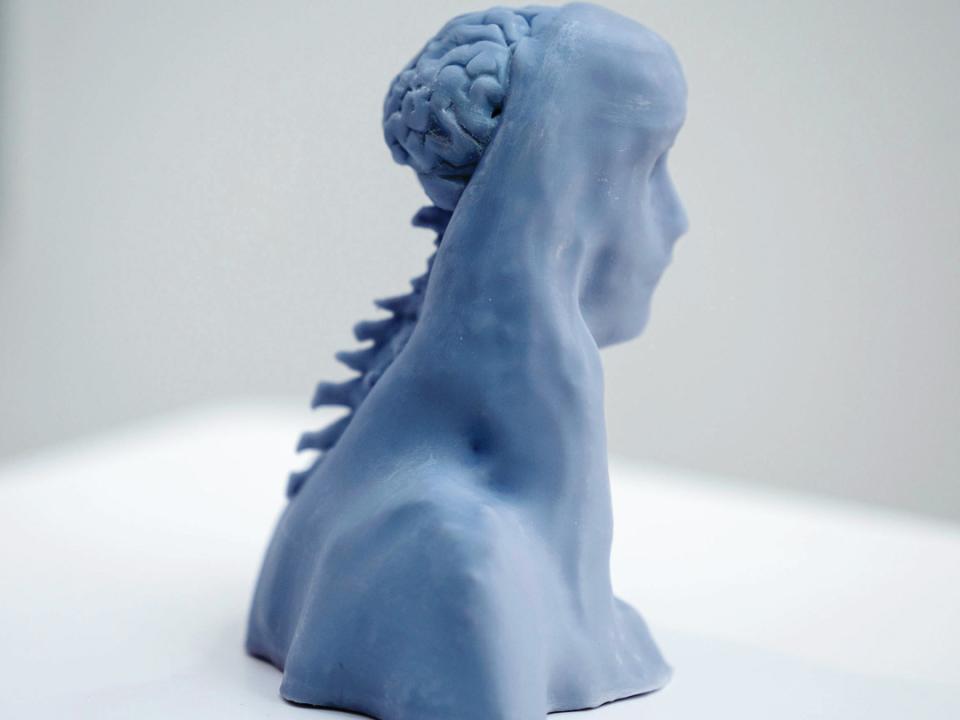
Meabh Hennelly
"My artwork is about the hidden nature of Multiple Sclerosis for people living with the disease. The sculpture, like me, looks ordinary from the front, nothing unusual. As you walk to the side and back of the sculpture you can see my exposed brain and spine. This is a metaphorical representation of sharing my MS with someone, of opening up that side of myself and letting others into my hidden vulnerability."
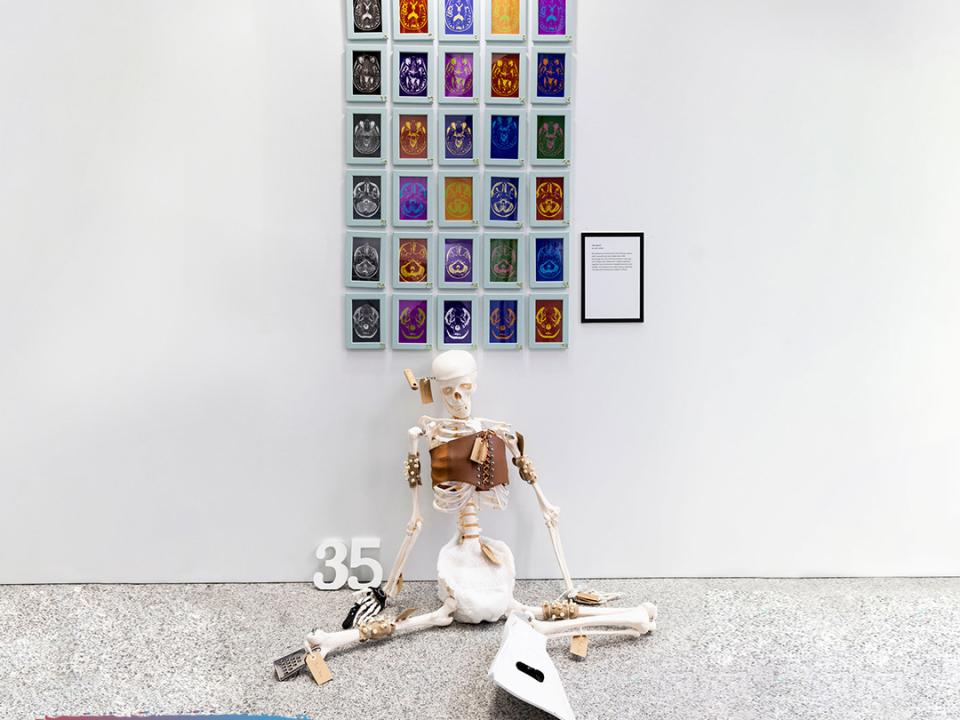
Joan Jordan
"My interactive artwork shows how the brain lesions which cause MS are only visible due to MRI technology yet I live with the symptoms every day. From fatigue, pain, depression, tingling, spasticity, cognitive fog, incontinence, headache and pins and needles, my symptoms are wide-ranging impacting my body and mind but are invisible to others."
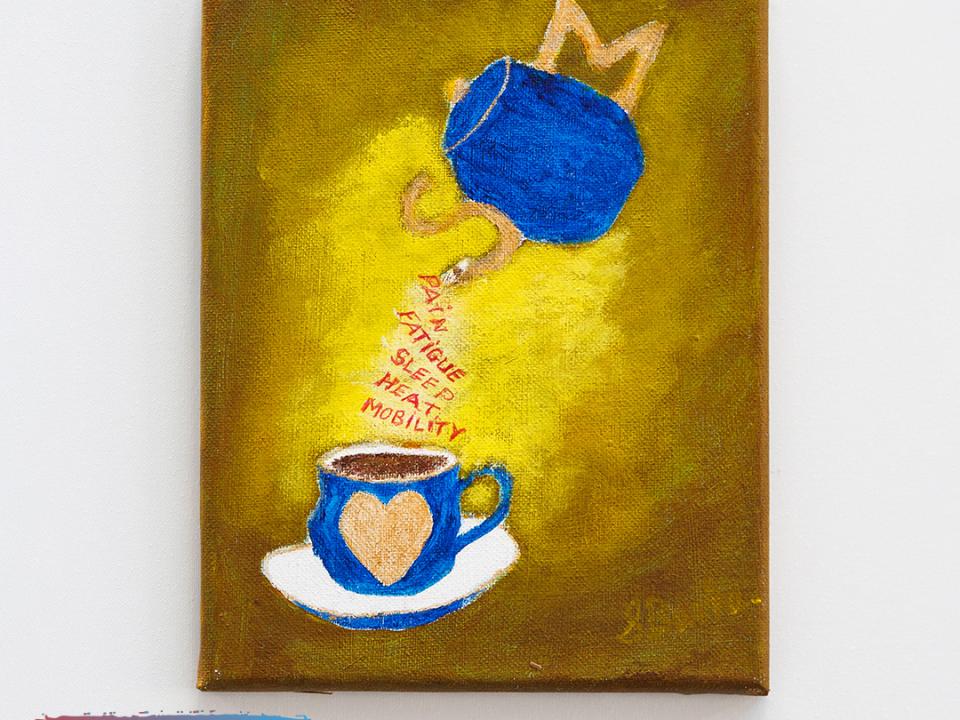
Seamus Burke
"For centuries, the ritual of sharing a cup of tea has acted as a catalyst for people to discuss and solve problems experienced in life. In this case, the teapot is pouring out some of the symptoms of MS which I experience on a daily basis. I hope that my artwork helps to encourage others to share the symptoms and MS journey they are experiencing every day."
Pouring Out My Troubles, a poem by Seamus Burke
Pouring out my troubles is what I do sometimes, it lightens the load that weighs heavy on my mind.
Sometimes it’s just the simple things that pull me down, the more complex problems see me constantly wear a frown.
It’s great to have a listening ear beside you as you speak, someone who understands you in your time of need.
A friendly voice on the end of the telephone line can lift you to a higher plane and calm your mind.
In this time of lockdown Zoom has played it’s part, we chat with one and other our problems to impart.
Here I am on Facebook, Instagram and Twitter too, now I’m pouring out my troubles to you and you and you.
Maybe you are someone just like me when troubles come knocking on your door, the words you could rely on aren’t there when you need them most.
Find someone who will listen, who will help to share your load and help you on your road.

Sarah Hutton
"My artwork is a self portrait depicting the changes that I experienced at the time of diagnosis but found so difficult to articulate verbally. My symptoms are mostly hidden from others but are circulating throughout my body and mind daily, including optic neuritis, nerve damage, weakness, fatigue and pain through to changes in my identity and behaviour. My aim was to illustrate through art the uncertainty and isolation that a MS diagnosis can lead to and ultimately the resilience it can bring."
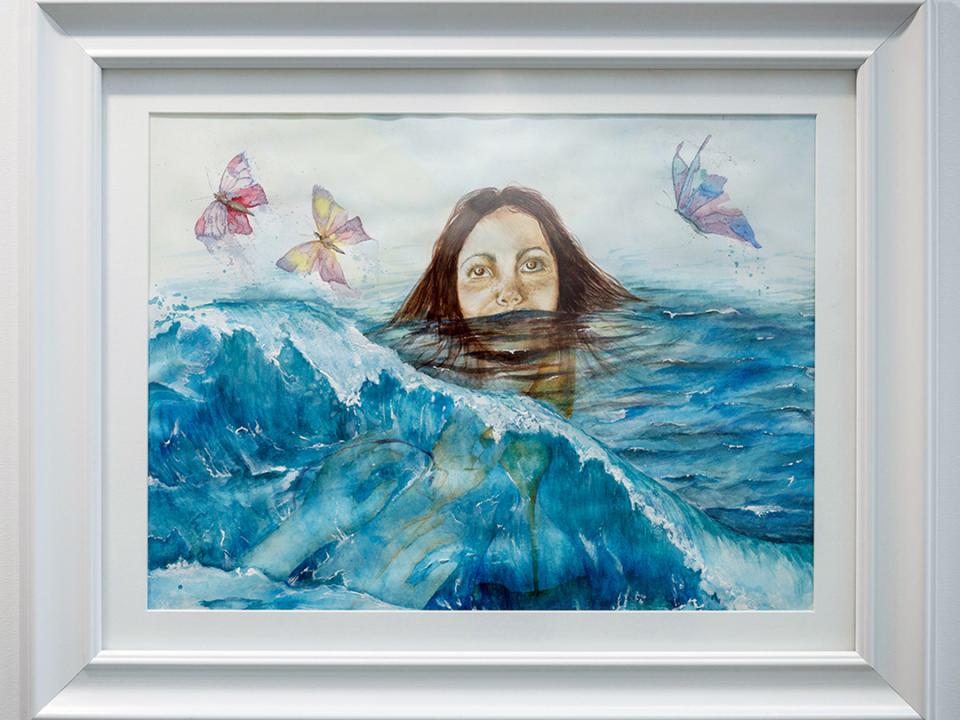
Dearbhla Crosse
"This painting depicts how those with MS often precariously navigate two worlds. I was drawn to the imagery of water as so much of MS happens beneath the surface. At times, this sense of being overwhelmed is like being submerged, swimming against a tidal wave of symptoms. The ocean represents the turbulence of these emotions. Underwater, images depict my feelings of disconnection and worries that with the passing of time my health will slip away, as sand sifts through an hourglass. Although MS has taken parts of me, it has instilled a renewed sense of purpose and appreciation for my life and the people in it. The butterflies symbolise perseverance, transformation and hope."
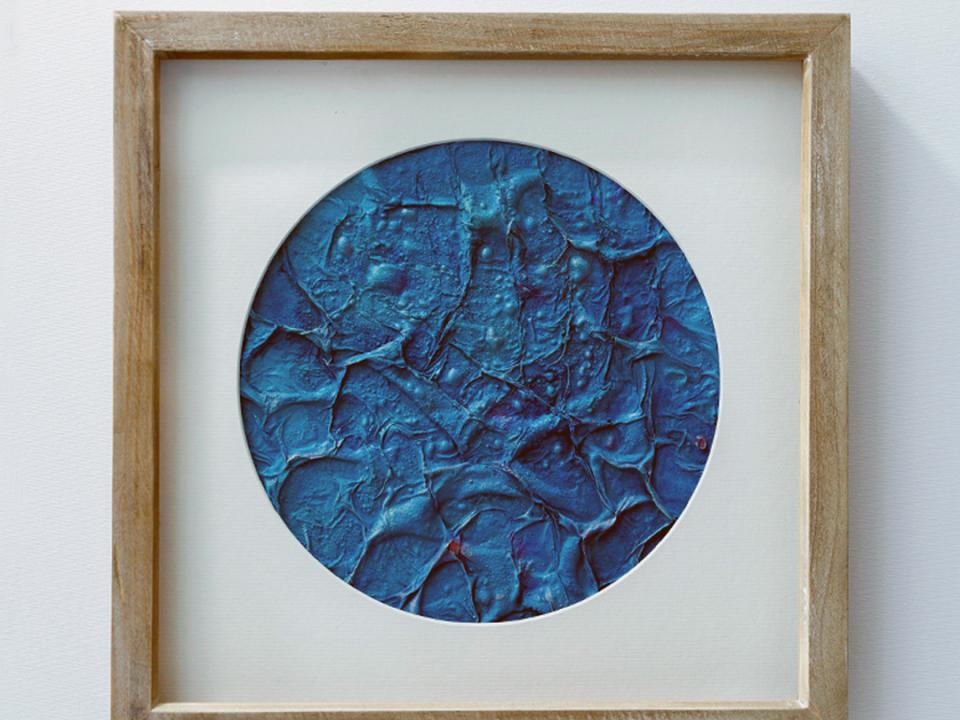
Evelyn O'Keeffe
"My artwork is inspired from the time I rejected an invitation from my medical team to view my MRI scans as I believed they were probably bleak, dark and terrifying. The imagined lesions and damaged nerve fibres in my paintings are a far cry from what I would have discovered as I wanted to focus my artwork to depict a different scenario, one filled with optimism, colour and joy."

Rosie Farrell
"Through metaphorical imagery, my artwork explores my MS symptoms, particularly pain, and how these have forced me to examine my identity. In Irish mythology the raven is misunderstood as representing solely death but it can just as often signify renewal and a change of fate. Much like the raven, society has a fixed idea of disability as being inherently negative: something to fear and hide from. But for me MS has just become another facet of my identity - it’s the societal disability I’ve experienced, such as inaccessibility, that has been far more disabling. Hand of Fate looks at how disability marks and shapes us in unexpected ways, how beauty and pain are interconnected, and the positive effects disability can have in moulding our identity."

Sam Gaine
"I have been a landscape painter most of my working life. Being an artist gives me a great sense of pride, purpose, and meaning in my life. I no longer have the dexterity in my hands to paint but I draw every day. Drawing has almost become a spiritual practice for me. Being creative is my anchor, it has been my light through dark times. I draw in the early hours of the morning after I have rested. Some nights I don't have the energy to draw and I just make a line on the page. Showing up is what is most important."

Ruth Donnelly Burden
"The inspiration for this piece comes from a poem I wrote describing my feelings about living with Multiple Sclerosis. The 3 parts represent my life before MS, my experience during my last Relapse and my thoughts concerning my future.
Part 1
Self portraits in vivid colour capture a glimpse into my life before MS. They float in bubbles, dreamlike, memories of a past life no longer possible. Disappearing before a dark incoming tide containing hidden depths of uncertainty. It represents the all consuming nature of the approaching illness.
Part 2
The experience of Relapse that caused sight loss. Here the imagery suggests the emotions felt. Empty bubbles replacing the experience of life. Trapped by an attack of MS and isolated by disability the cage also represents pain and spasticity. Suspended from telegraph poles with worn wires, (like lesions on nerve pathways) they symbolise the difficulty in communicating the experience of MS to others. The cage casts the shadow of a wheelchair and the constant threat of further disability.
Part 3
Soft watercolours capture a calmer acceptance of change. A cracked hourglass represents the temporary nature of human existence. With printed statistics on Relapsing Remitting MS a ticking clock is a reminder of possible limitations ahead. Rolling dice float over footprints in the sand, a chance of maintaining mobility. The Dove, a symbol of Hope and Peace also signifies navigation. To look for balance and remember to live."
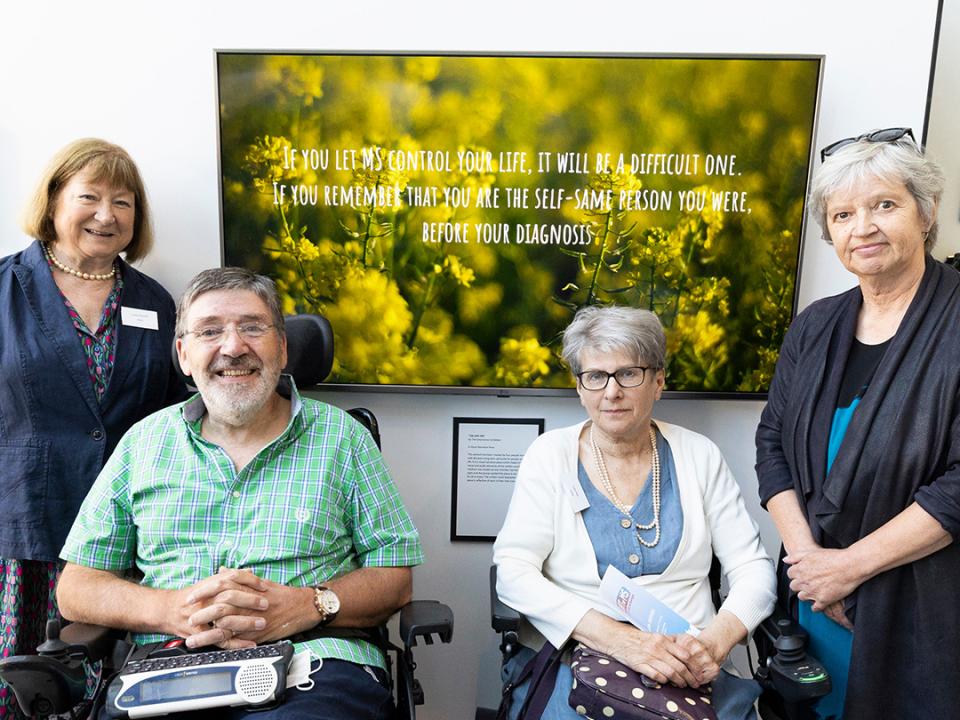
Greystone Scribblers
"This artwork has been created by four people living with MS and a long term advocate for people with MS. It is a visual narrative piece which means it has visual and audio elements of the written word. This medium was chosen as one member has lost their sight and the group wanted the piece to be inclusive for all to enjoy. The written word displayed in the piece is reflective of each of their lives navigating MS."
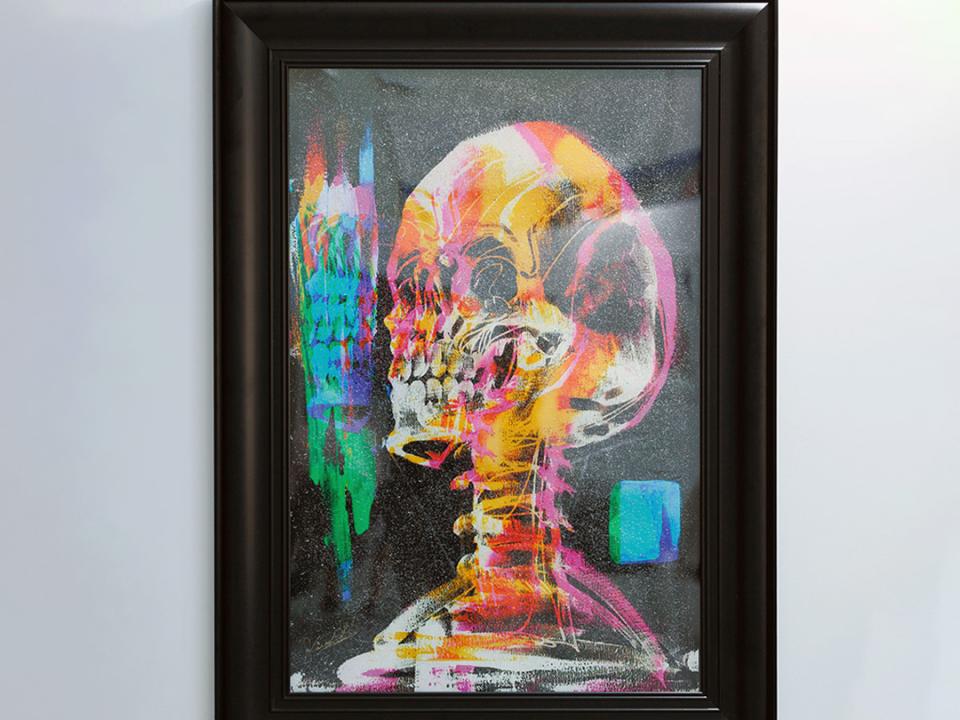
Lauren White Murphy
"My artwork demonstrates the multiple sclerosis symptoms I experience including pain, weakness, spasms and cognitive issues which often leave me feeling delayed in time. The diamond dust used in the art serves as a reminder of how precious life is despite living with MS."
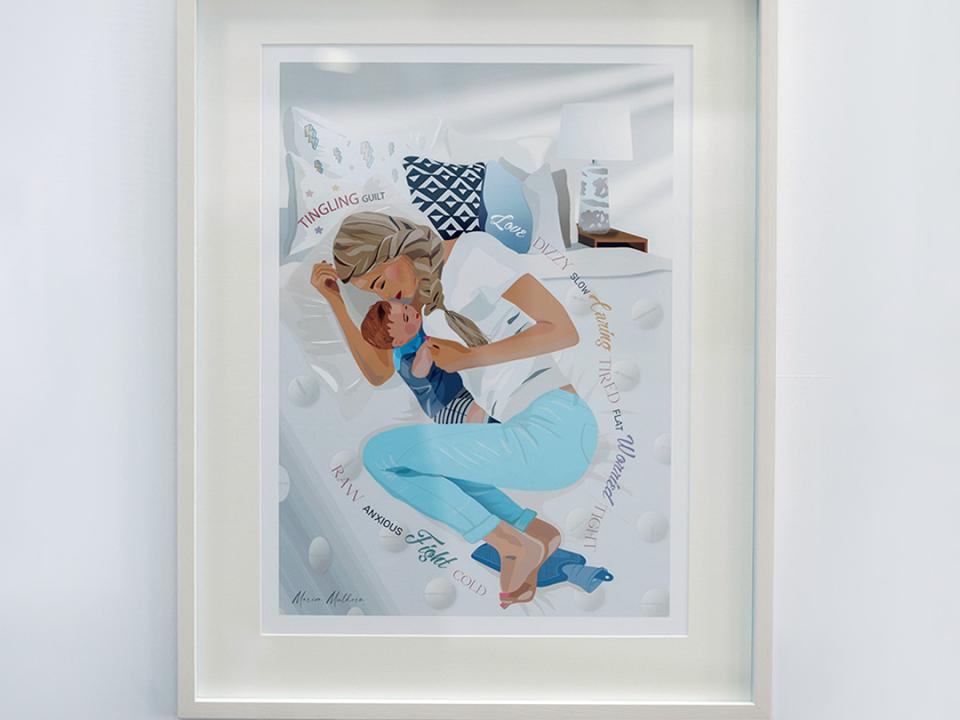
Marion Mulhern
"My artwork reflects my feelings and emotions that I experienced after a relapse following the birth of my baby boy. I felt raw, flat and worried. As a new mother, I recall feeling that my symptoms and medication were pulling me down, I was tired, I saw bright flashes and my feet felt like blocks of ice. I remember stating over and over, 'my feet are cold', 'my feet are cold', 'did I say my feet are cold?' I reminded myself that my baby needed me so it didn't matter how I felt anymore which helped to carry me through and the happiness and love I felt for him made me stronger."
The exhibition is open to the public from Thursday 26 May to Wednesday 1 June inclusively in the main foyer of Trinity Biomedical Sciences Institute on Pearse Street, Dublin.